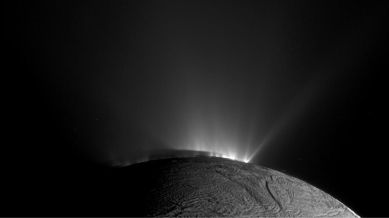Technology on smartphone reviews, in-depth reports on privacy and security, AI, and more. We aim to simplify the most complex developments and make them succinct and accessible for tech enthusiasts and all readers. Stay updated with our daily news stories, monthly gadget roundups, and special reports and features that explore the vast possibilities of AI, consumer tech, quantum computing, etc.on smartphone reviews, in-depth reports on privacy and security, AI, and more. We aim to simplify the most complex developments and make them succinct and accessible for tech enthusiasts and all readers. Stay updated with our daily news stories, monthly gadget roundups, and special reports and features that explore the vast possibilities of AI, consumer tech, quantum computing, etc.
NASA finds life-sparking energy source and molecule on Saturn’s icy moon
A study has found the presence of a key ingredient of life and powerful energy sources that can trigger it.

Scientists have found evidence of a key ingredient for life and a powerful source of energy that could fuel it on Saturn’s icy moon Enceladus.
monthly limit of free stories.
with an Express account.
They also confirmed that the ocean that hides under the moon’s icy outer shell holds a powerful source of chemical energy. The study published in the journal Nature Astronomy reveal that there may be more chemical energy inside the moon than previously understood. The higher the energy available, the higher the chances of life existing.
“Our work provides further evidence that Enceladus is host to some of the most important molecules for both creating the building blocks of life and for sustaining that life through metabolic reactions. Not only does Enceladus seem to meet the basic requirements for habitability, we now have an idea about how complex biomolecules could form there, and what sort of chemical pathways might be involved,” said lead author Jonah Peter in a press statement.
This new research presents evidence for new additional chemical energy sources that are a lot more powerful and diverse than the making of methane. This means there are many chemical pathways that can lead to the formation of life in Enceladus’s subsurface ocean.
Unlike previous research, which, according to NASA, focused on lab experiments and geochemical modelling, the new work depended on detailed statistical analysis. The researchers looked at data collected by Cassini’s ion and neutral mass spectrometer. That instrument studied gas, ions and ice grains around Saturn.